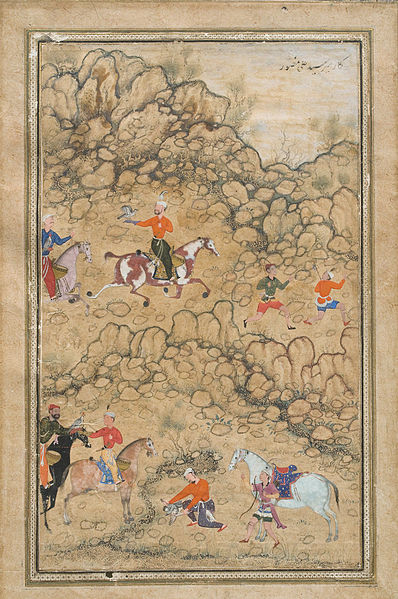The Köprülü era was a period in which the Ottoman Empire's politics were frequently dominated by a series of grand viziers from the Köprülü family. The Köprülü era is sometimes more narrowly defined as the period from 1656 to 1683, as it was during those years that members of the family held the office of grand vizier uninterruptedly, while for the remainder of the period they occupied it only sporadically.
The Battle of Vienna, 12 September 1683, painting by Frans Geffels.
Grand vizier was the title of the effective head of government of many sovereign states in the Islamic world. It was first held by officials in the later Abbasid Caliphate. It was then held in the Ottoman Empire, the Mughal Empire, the Sokoto Caliphate, the Safavid Empire and Cherifian Empire of Morocco. In the Ottoman Empire, the grand vizier held the imperial seal and could convene all other viziers to attend to affairs of the state; the viziers in conference were called "Kubbealtı viziers" in reference to their meeting place, the Kubbealtı in Topkapı Palace. His offices were located at the Sublime Porte. Today, the Prime Minister of Pakistan is referred to in Urdu as Wazir-e-azam, which translates literally to grand vizier.
Koca Sinan Pasha
Bairam Khan
Abu'l Fazl Ibn Mubarak presenting the Akbarnama to the emperor (D. 1602 AD)
Sadullah Khan





